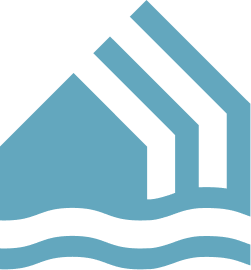Valuing water for people and places: lessons from water recycling in the Olympic Park
Water is currently undervalued in the UK. It’s readily available and cheap, with little incentive to change how it’s supplied to homes. This has meant that initiatives to reuse water in new housing developments - for uses such as toilet flushing and irrigation - have struggled to get off the ground.
As part of the EWSC project, we’re exploring case studies of developments where water reuse schemes have been installed, to better understand what’s worked, what hasn’t, and why these schemes haven’t always been fully utilised.
In particular, we’ll be looking at the motivations and role of various actors in these schemes – water companies, local planning authorities and developers, known as ‘anchor institutions’. We’ll explore how we might align local authority policies, water company incentives and developers’ sustainability objectives to make water reuse schemes viable, thereby unlocking the cross-sector value of water smart communities.
This work is one of the EWSC’s ‘enabling action’ projects, linked to the ‘values’ principle of the EWSC model.
The key output is an end-to-end journey for how water companies, developers and local authorities can collectively deliver water reuse schemes, from design through to procurement and installation, to maintenance and user experience. It will cover responsibilities, costs, incentives and aim to unite the disjointed approach across institutions. A successful outcome might be local authority planning conditions linked to a water company incentivisation scheme which would motivate developers in a certain area to create water efficient homes incorporating reuse.
The current activities of the enabling action project include:
Developing a database of existing water reuse schemes, delving into some of them in more detail;
Reviewing previous Integrated Water Management studies, like those on the Isle of Dogs and Old Kent Road, to understand why recommendations were not taken up and ensure lessons learnt are taken forward into existing and new studies.
One of the reuse schemes that we’ve looked at in further detail is the Old Ford reuse plant at the Olympic Park, London. Ahead of its time in 2012, this plant treated raw sewage to a high quality to supply water for irrigation in the park and toilet flushing at Olympic venues. The plant was set up as a research project until 2019. It’s now being decommissioned because it hasn’t been possible to secure sufficient demand in Olympic park legacy buildings to keep the plant operational. Originally approximately 70% of the water supplied by the plant was used for water for irrigation, but this was only required in the summer months, so for a lot of the year the treated water just went straight back to the sewer and was essentially wasted.
There are lots of lessons that can be learnt from Old Ford that can help with mainstreaming water reuse systems in new developments. Check out this mini video about the scheme, featuring John Hernon (Thames Water), Marie Raffin (WSP) and Sian Hills (ex Thames Water) - all who were very involved with the scheme from its inception through to its operation.
